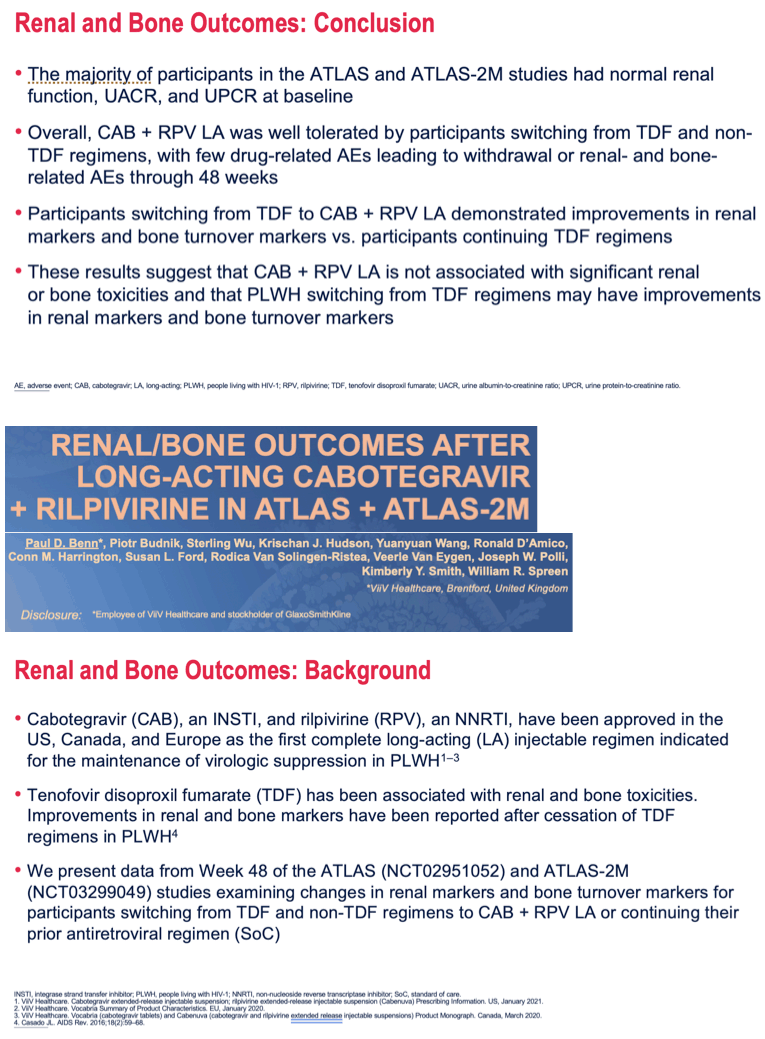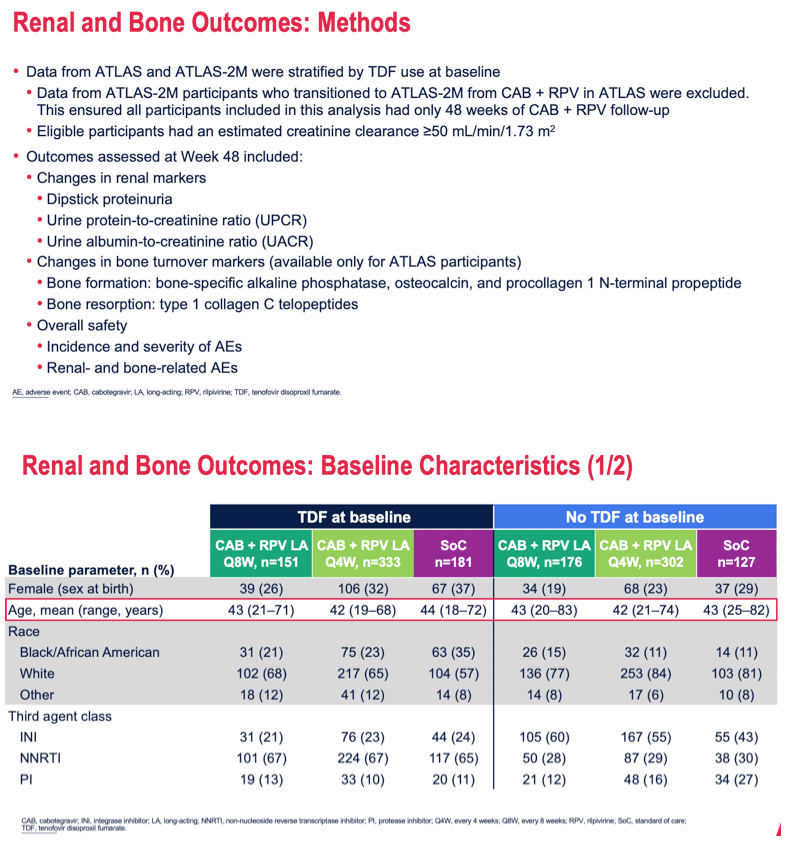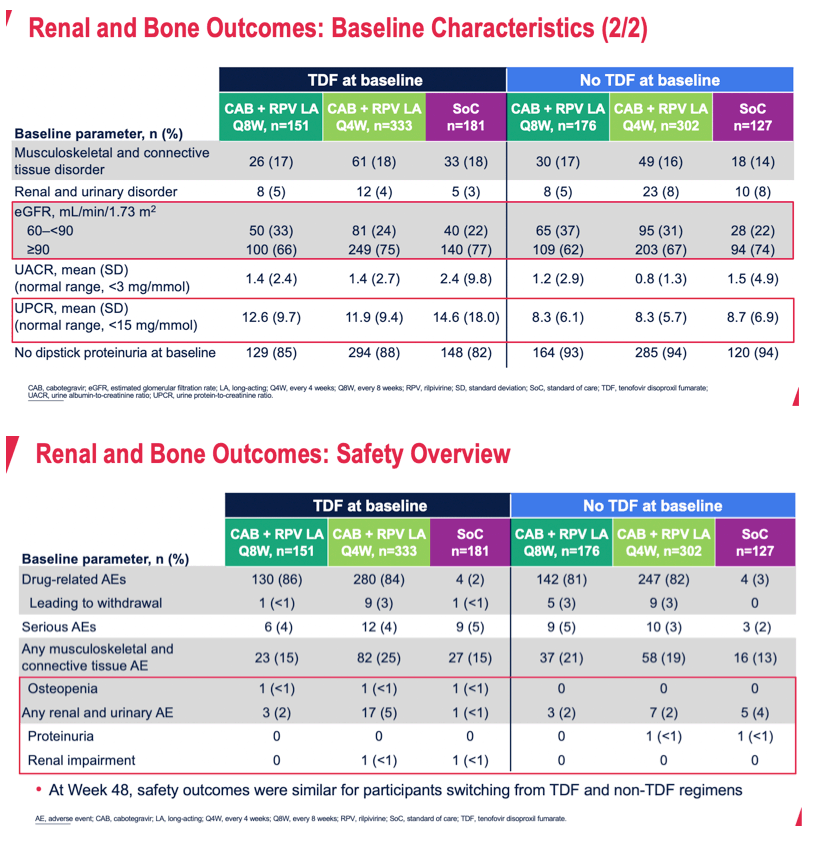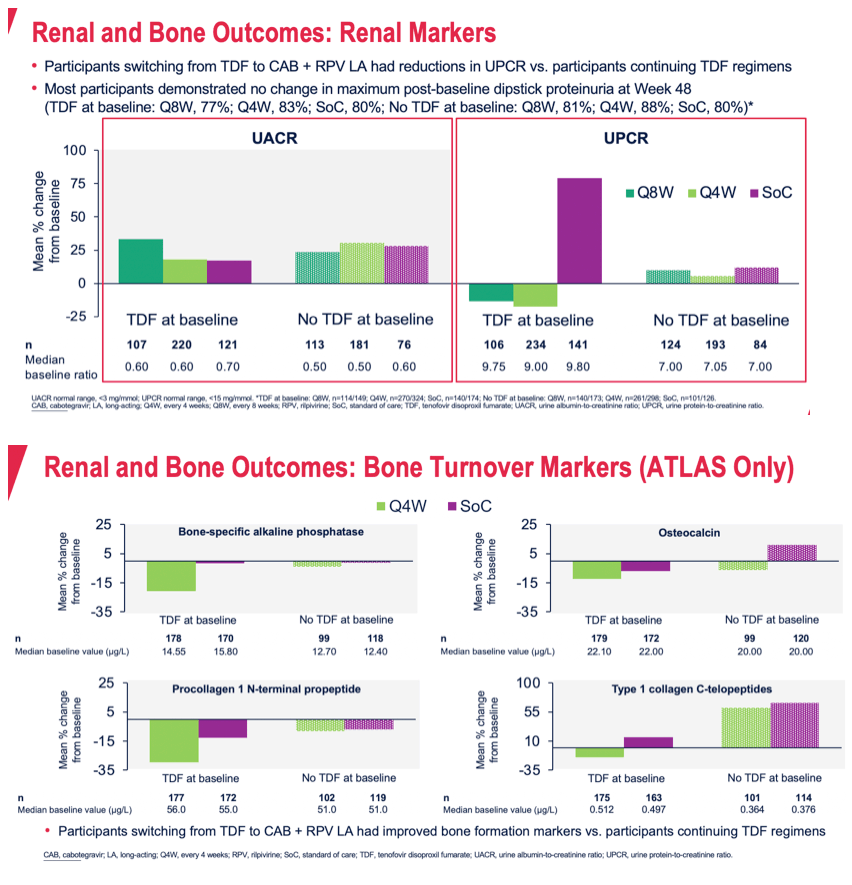 |
 |
 |
| |
RENAL/BONE OUTCOMES AFTER LONG-ACTING CABOTEGRAVIR + RILPIVIRINE IN ATLAS + ATLAS-2M
|
| |
| |
CROI 2021 March 6-10 Reported by Jules Levin
Paul Benn1, Piotr Budnik1, Sterling Wu2, Krischan J. Hudson3, Yuanyuan Wang2, Ronald D'Amico3, Conn M. Harrington3, Susan L. Ford4, Rodica Van Solingen- Ristea5, Veerle Van Eygen5, Joseph W. Polli3, Kimberly Smith3, William R. Spreen3 1ViiV Healthcare, Brentford, UK, 2GlaxoSmithKline, Collegeville, PA, USA, 3ViiV Healthcare, Research Triangle Park, NC, USA, 4GlaxoSmithKline, Research Triangle Park, NC, USA, 5Janssen, Beerse, Belgium
Background: Intramuscular cabotegravir (CAB) and rilpivirine (RPV) long- acting (LA) has been evaluated in two Phase 3 studies, ATLAS (NCT02951052) and FLAIR (NCT02938520), which demonstrated noninferiority of CAB+RPV LA dosed every 4 weeks (Q4W) to daily oral standard of care (SoC), and the Phase 3b study ATLAS-2M (NCT03299049), demonstrating noninferiority of CAB+RPV LA dosed every 8 weeks (Q8W) to Q4W. Tenofovir disoproxil fumarate (TDF) is associated with renal/bone toxicities and improvements in renal/bone markers have been reported after cessation of TDF regimens. We present data from Week (W) 48 of ATLAS and ATLAS-2M examining changes in renal markers and bone turnover markers.
Methods: Data from ATLAS and ATLAS-2M were stratified by baseline (BL) TDF use. Efficacy and safety outcomes including changes in renal markers (urine protein-to-creatinine ratio [UPCR] and urine albumin-to-creatinine ratio [UACR]) and bone turnover markers (bone-specific alkaline phosphatase, osteocalcin, procollagen 1 N-terminal propeptide [P1NP], type 1 collagen C telopeptides [CTx]) were assessed. For ATLAS-2M participants who transitioned from LA therapy in ATLAS, only data from ATLAS were included. W48 efficacy endpoints were proportion with plasma HIV-1 RNA ≥50 c/mL and <50 c/mL. Changes in bone markers were only available for ATLAS participants.
Results: In total, 1270 participants were included in the analysis; 665 were receiving TDF at BL and 605 were receiving non-TDF regimens. BL characteristics and outcomes at W48 are presented in Table 1. Within strata, the proportions with HIV-1 RNA ≥50 c/mL and <50 c/mL were comparable across arms. Participants switching from TDF regimens to CAB+RPV LA experienced reductions in UPCR, compared with small increases observed among those switching from or continuing non-TDF regimens. Participants continuing TDF regimens had greater increases in UPCR (mean % UPCR change from BL: TDF: Q8W, -13.2; Q4W, -17.5; SoC, 79.3; non-TDF: Q8W, 10.0; Q4W, 5.4; SoC, 12.0). In ATLAS, there were greater reductions in bone turnover markers in participants switching from TDF to CAB+RPV LA compared with other groups (mean change from BL in P1NP and CTx [μg/L]: TDF: Q4W: -23.7, -0.14; SoC: -12.4, 0.01; non-TDF: Q4W: -8.1, 0.06; SoC: -6.4, 0.07).
Conclusion: Participants switching from TDF to CAB+RPV LA experienced improvements in renal markers and bone turnover markers. These results support the therapeutic potential of CAB+RPV LA.





|
| |
|
 |
 |
|
|